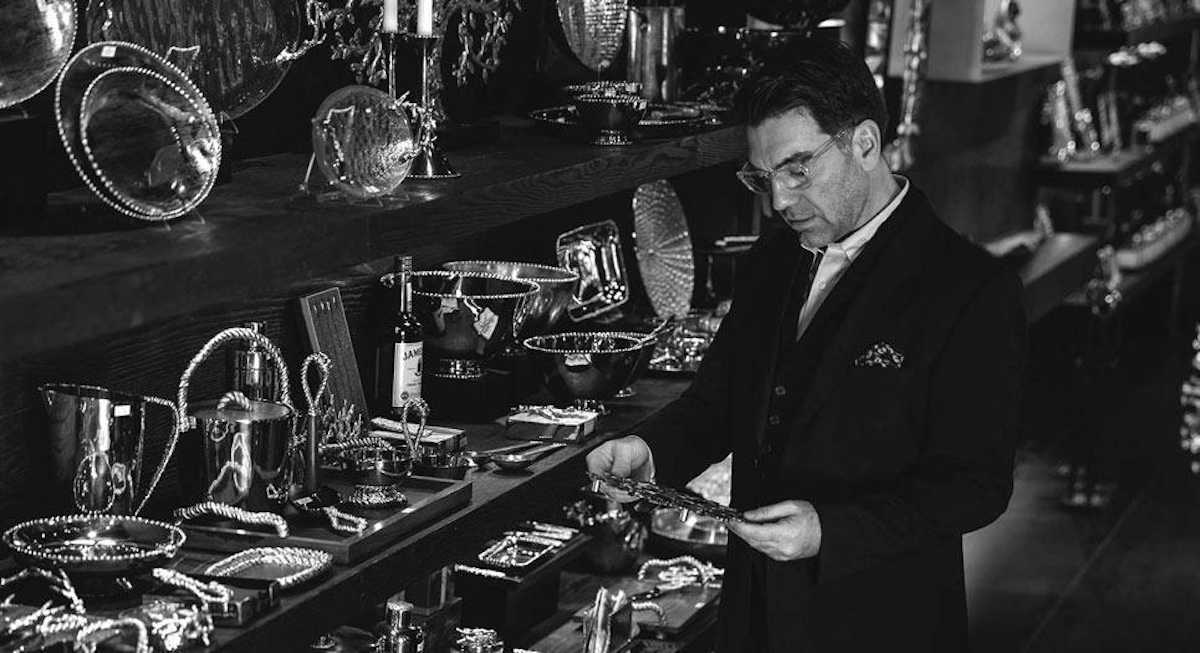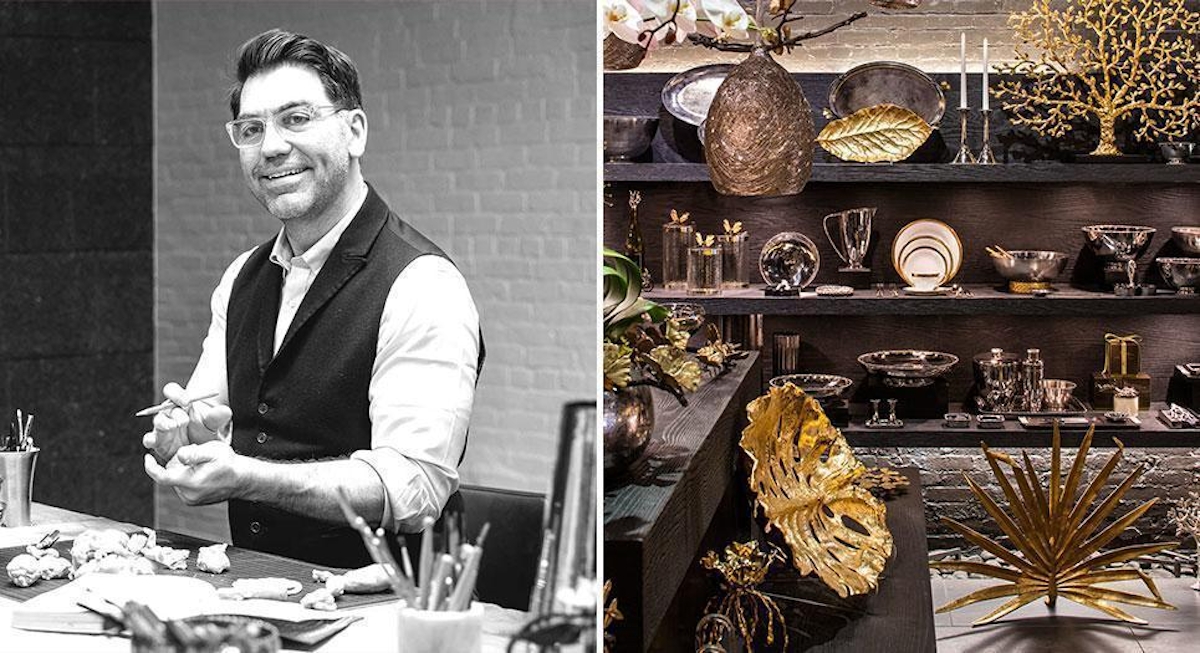In the second half of this LuxDeco exclusive, brand founder Michael Aram discusses his fine arts background, how his style has evolved over the years and the importance of quality to his brand.

Q&A with Michael Aram: Part 2
The luxury tableware brand founder continues his conversation with LuxDeco

How has your background in fine arts influenced the way you work now?
I think it’s everything I needed. It’s about feeling, about thinking, about creating, about making so it’s the perfect background. I think a lot of us have that hierarchy of what art is, as in is it decorative art?; is it fine art?; is it writing?; is it poetry?; is it architecture? I think it’s all the same.
And, as I tell my team when sometimes I hear “We’re not furniture designers” or “We’re not lighting designers”, I’ll say to them “Well, I’m not a designer!” We just look and we feel and we make.
What’s nice now is that I’m coming back full circle and doing fine art pieces, limited edition sculpture pieces—things that are absolutely non-functional. And, that, for me is so exciting. It’s a fun thing to be able to continue to do and for customers to look at that and not see a separation, whether they’re buying a nut dish or a sculptural piece for their home.
How did you make the transition from artist to what you do now?
My first job out of school was working at the Metropolitan Museum doing art books and posters. Again, I was not trained as a graphics person. In those days, graphic design was craft. There was no computer typesetting. It was cutting and pasting on layout boards all done with a razor blade. As I looked at it, it was two dimensional art that we were making. And all the things that I studied in school, whether it was choreography or art history, were all things that informed me when I thought about variation of height and what attracts the eye, moving your eye from page to page.
It was a wonderful first job for me because it was the first product I was making, if you think of books or posters as products. It was a nice way for me to start in terms of product design.

How has your work evolved over the years?
I think I would say that initially I was incredibly object driven. The focus was on “look at this piece I made” and now it’s more like “look at these collections I made”. What we’re doing more and more is, what we say, “pulling back the lens” a little bit to look at the room that a piece sits in. Look at the table which is complete from the linens to the crystal to the porcelain to the metal. Look at the table it’s on, look at the rug that that’s sitting on, look at the painting on the wall… When I first started it was all about the object and now it’s about the experience.
Your materials range from porcelain to metals, and finishes from hammered to woven. How important is it to you to use the very best of these?
Our philosophy is to use the best materials that we can find. Also, the ethics that I look at when I’m designing are that [a piece] is comfortable, it’s lightweight, it’s durable. Those are things we look at as quality.
Our porcelain, for example, is porcelain—it’s not stoneware. It’s super hard and super white. Crystal, because it’s thin and there’s a refined quality to something that’s lightweight for glassware. Now, with our textiles we’re doing beautiful, beautiful linens and beaded edges. We’re using materials that we love, that are comfortable and that have a sense of refinement to them. That’s what we really look for.

And you visit the workshop in India regularly. How involved do you like to be in the manufacturing process of your pieces?
I’m in India every couple of months for a couple of weeks. I wish I was there more! In the past 26 years, I’ve spent most of my time there. It’s only now, in the last 5 or 6 years, that I’ve been more in New York because of my family but before that I’d be gone for 6, 8, 10 months of the year in India. It’s where I feel most creative and most comfortable.
It is our own workshop. We built it brick by brick, we own the land and the craftsmen are direct employees of our company. So it’s not like visiting, it’s like being home for me. My team is amazing and we’ve had people there for decades so there’s something really lovely about being there and working with the team.
We keep a home there still and, even though my family has not visited yet, we always talk about when the kids get older. I would love to have India as an extension of their lives and for them to also feel that sense of home there that I do.
It’s understandable that you feel so creative in India since it just seems to have an inherent creativity within in. I know you felt that when you first visited.
It’s unbelievable. That’s what pulled me there. Everybody always says, “how come you chose India?” and I always laugh and say, “Well, India chose me.” I didn’t go there with a plan. I just went there and discovered and was seduced by objects made by hand.
I would say when you grow up in the West, you never really get a sense of living craft. Craft is such a rarefied art in the West that if there’s a glassblower or a weaver or a bookbinder it’s a huge deal. And, there, you just walk the streets and you’re seeing books being bound, you’re seeing hot metal type being set, you’re seeing things being made. It’s just mind-boggling. And that’s what really inspired and touched me so much—the humility of the craft and the concept of what could be created.
We were in an area where they do a lot of hand-knotted carpets last week because we’re looking at doing some carpets now and, even though you know that rugs are hand-knotted, to understand what that really means when you see the weavers create them is mind-boggling. You’re like “Really? You just work on one centimetre this whole day?”
That puts it all into perspective, doesn’t it? It must be really inspiring to see, but hard to comprehend until you actually see it.
No, it’s impossible. I have to say, I came home and was turning over all my rugs and saying, “I can’t believe I’ve taken that for granted!”
Read the first half of Michael’s interview here.
